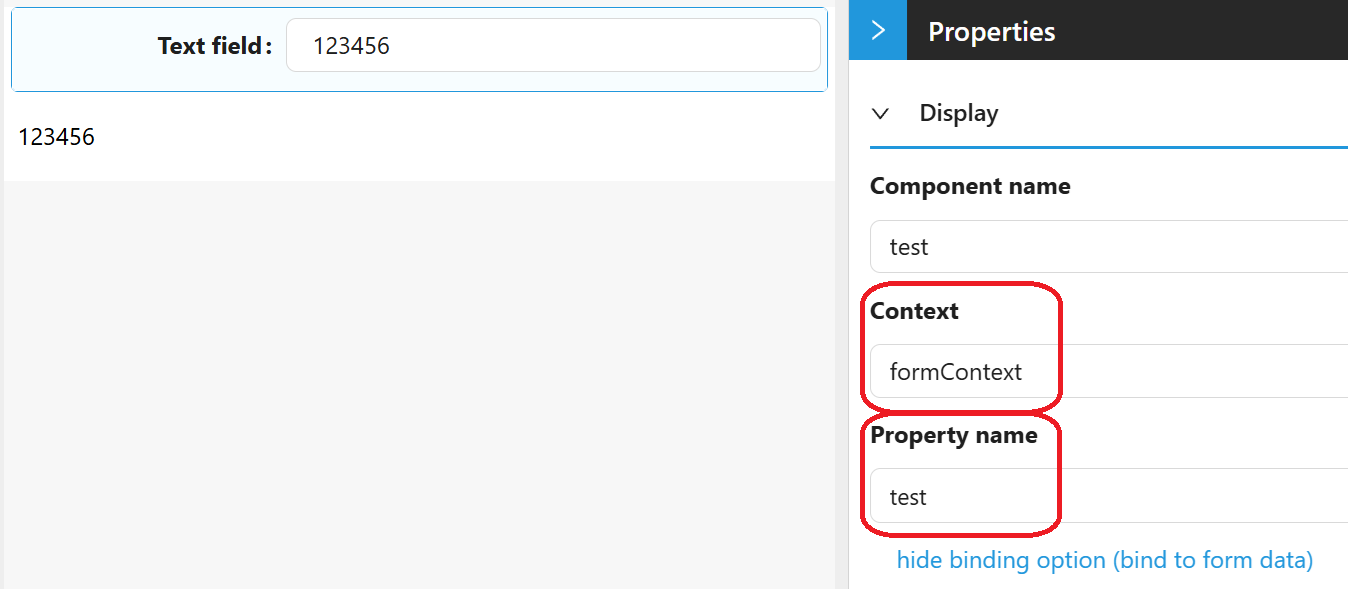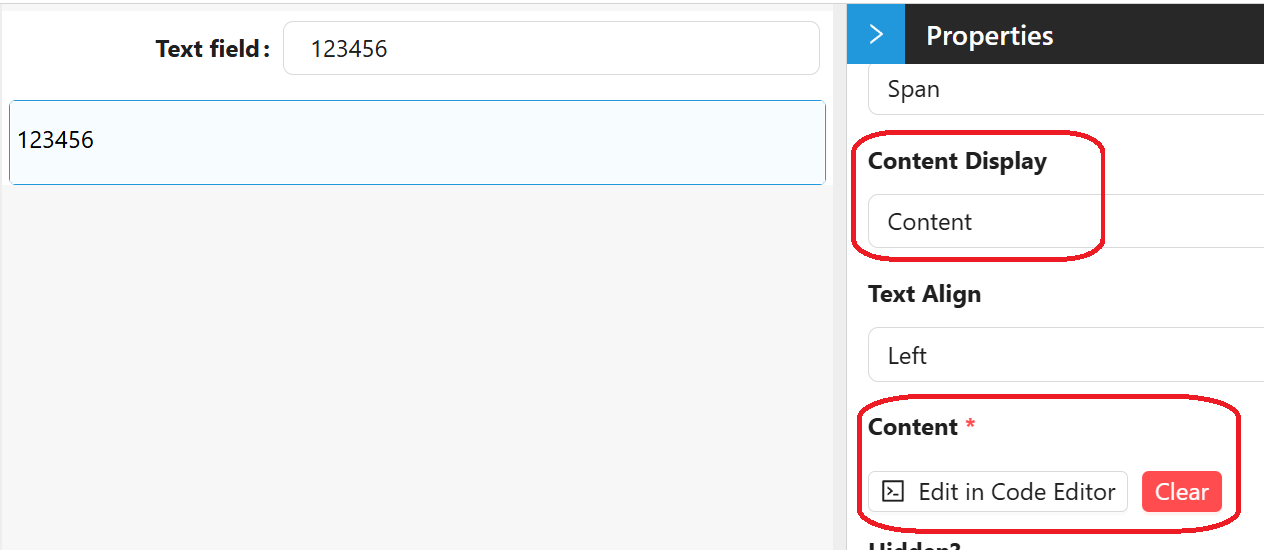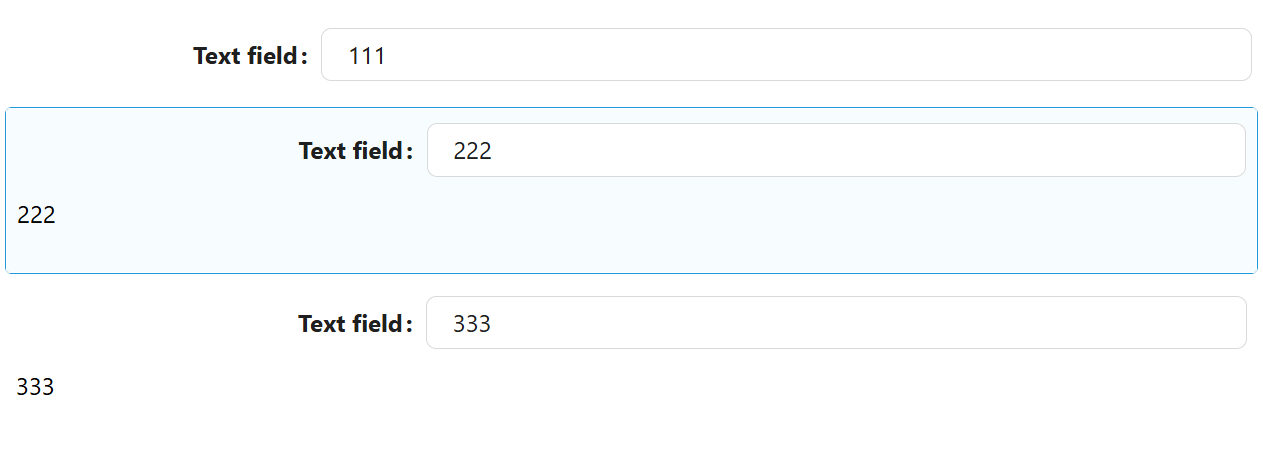Form context
Context for storing temporary data for form.
Accessed via contexts.formContext
formContext provides access to form level data context. All the data stored in this context is available inside the specific form (Subforms, Modal dialogs, Form cells, Data list items, etc.). It can be used to save any temporary data used on the form. When closing a form, all the form context data is cleared.
How to use
To save data in the context of any of these types, it is enough to specify a variable name and assign a value to it.
Setting a value
contexts.formContext.myFormAvailable = 'test data`;
To use data from the context of any of these types, it is also enough to use the variable name.
Reading a value
const getPlaceHolder = () => {
return contexts.formContext.myFormAvailable;
}
The specifics of form contexts
Please note that one appContext and one pageContext are always available for use. However, there may be multiple formContext. For example, if two SubForms are used on a main form, then the main form has its own formContext, and each subform has its own formContext. The components on each of the forms (SubForms) will only have access to the formContext of their form.
Example
There is a Form with TextField and Text components.
The TextField component bound to the formContext and test Property name.

The Text component has scripted Content setting


So, the Text component shows values typed in the TextField component.
Then this Form is used as a SubForm.
Main form contains TextField component (also bound to the formContext and test Property name) and two SubForm. So, it means that all TextField components are bound to the formContext and test Property name. But as can you see each TextField component is bound to its own formContext, and their values are not mixed
